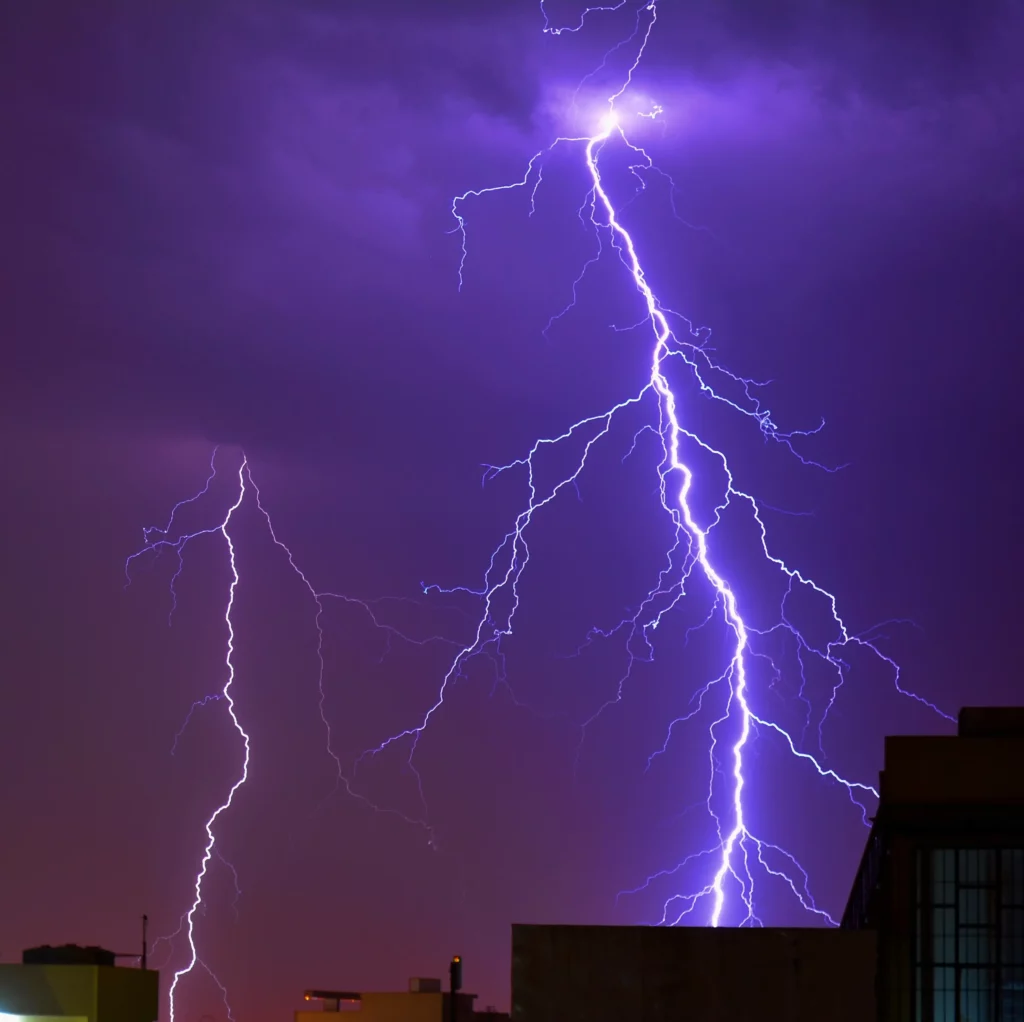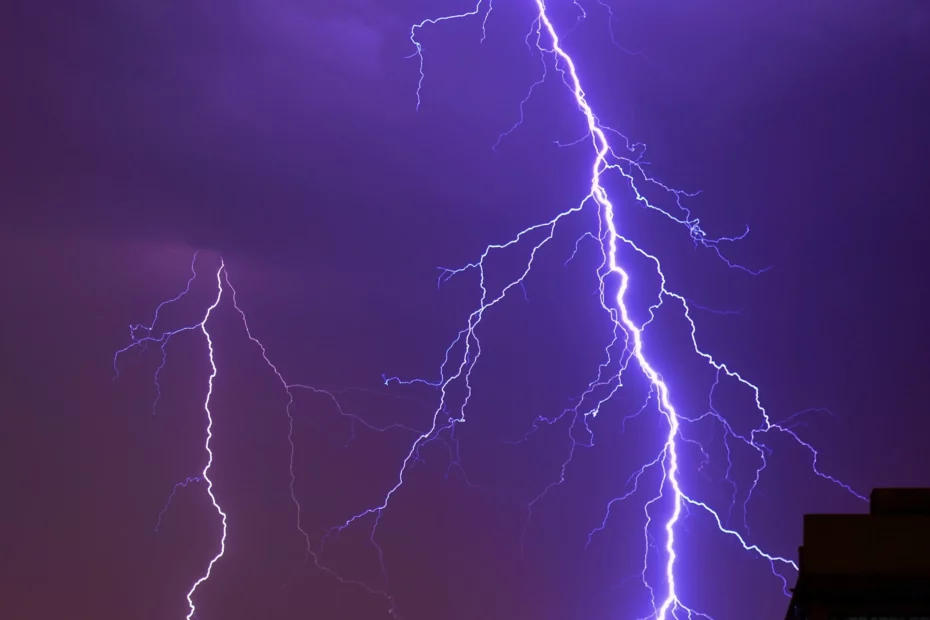Thunderstorm phobia can be a distressing experience for many dogs, causing anxiety and fear during storms. As pet owners, it’s essential to understand how to support our furry friends during these challenging times. In this article, we will explore effective and powerful calming techniques that can help alleviate thunderstorm phobia in dogs.
According to PetMD, thunderstorm phobia occurs in both dogs and cats, but dogs are more susceptible to this type of fear. The exact cause of dog storm anxiety is unknown, but it may include a combination of the following factors:
- lack of exposure to storms at an early age
- a traumatic experience during a storm
- changes in barometric pressure
- static electricity;
- and low-frequency rumbles preceding a storm that humans cannot hear.
According to Today’s Veterinary Practice, after 5 uses of the Anxiety Wrap, 89% of owners reported that it was at least partially effective in treating their dogs’ thunderstorm phobias.

What are common symptoms of Thunderstorm Phobia in Dogs?
Thunderstorm phobia can manifest in various ways, and the symptoms may vary from dog to dog. Here are some common symptoms associated with thunderstorm phobia in dogs:
- Trembling or Shaking: Dogs may exhibit trembling or shaking during thunderstorms. Which can be a visible sign of fear and anxiety.
- Panting and Pacing: Increased panting and restlessness, often accompanied by pacing back and forth, are common signs of stress and anxiety in dogs during thunderstorms.
- Hiding or Seeking Comfort: Dogs may try to find a safe place to hide, such as under furniture or in small enclosed spaces, seeking comfort and security during the storm.
- Vocalization: Some dogs may vocalize their distress through whining, barking excessively, or howling during thunderstorms.
- Destructive Behavior: Dogs with thunderstorm phobia may exhibit destructive behavior as a coping mechanism. This can include chewing on furniture, scratching doors or walls, or attempting to escape from the house.
- Salivation and Drooling: Excessive salivation or drooling is a common physiological response in dogs experiencing anxiety or fear, including during thunderstorms.
- Attempted Escape: Dogs may try to escape the perceived threat of thunderstorms by digging, scratching at doors or windows, or attempting to jump over fences. This behavior can potentially lead to injuries or escape if not properly managed.
- Changes in Appetite: Some dogs may experience a loss of appetite during thunderstorms. Due to the heightened stress and anxiety they are experiencing.
- Restlessness or Inability to Settle: Dogs with thunderstorm phobia often struggle to relax or find a comfortable position during storms, exhibiting signs of restlessness.
How did my dog develop Thunder Phobia?
The exact causes of thunderstorm phobia in dogs are not fully understood, but there are several factors that may contribute to its development:
- Noise Sensitivity: Dogs have more sensitive hearing than humans, and loud and sudden sounds like thunder can be particularly alarming to them. Some dogs may have a genetic predisposition to being more sensitive to loud noises. Making them more prone to developing phobias.
- Negative Association: Dogs may develop thunder phobia if they have experienced a traumatic event during a thunderstorm, such as a close lightning strike or a loud thunderclap. This negative experience can create a lasting association between thunderstorms and fear, leading to phobic responses in subsequent storms.
- Lack of Early Exposure: Dogs that have not been exposed to various loud noises, including thunderstorms, during their critical socialization period (between 3 and 14 weeks of age) may be more susceptible to developing phobias later in life.
- Learned Behavior: Dogs are highly perceptive and can pick up on their owner’s reactions to thunderstorms. If the owner displays fear or anxiety during storms, the dog may interpret this as a signal that something is genuinely threatening, reinforcing their own fear response.
- Genetics and Breed Predisposition: Certain breeds may be more prone to developing thunder phobia. For example, herding breeds, hounds, and gun dogs are often overrepresented among dogs with noise phobias.
- Generalized Anxiety: Dogs with a predisposition to anxiety or fear-based behaviors may be more likely to develop thunder phobia. If a dog already has generalized anxiety, thunderstorms can trigger or exacerbate their overall anxiety levels.
If your dog has developed thunder phobia, it is recommended to work with a veterinarian or certified animal behaviorist who can provide further guidance, behavior modification techniques, and strategies to help your dog overcome their fear and anxiety.

How to manage dog’s Thunder Phobia?
Managing your dog’s thunderstorm phobia requires a combination of strategies to help alleviate their fear and anxiety. Here are some approaches you can take to manage your dog’s thunder phobia:
- Create a Safe Environment: Designate a safe space in your home where your dog can retreat during storms. Make this area comfortable and secure, with access to their favorite toys, blankets, or bedding. Consider using white noise machines or calming music to drown out the sound of thunder.
- Desensitization and Counterconditioning: Gradual exposure to storm-like sounds can help desensitize your dog over time. Play recorded thunderstorm sounds at a low volume while engaging in positive activities like play or treat rewards. Gradually increase the volume and duration of exposure, rewarding calm behavior.
- Calming Products: Consider using calming products such as anxiety wraps (e.g., Thundershirts) or pheromone diffusers (e.g., Adaptil). These can provide a sense of security and reduce anxiety during thunderstorms.
- Behavior Modification: Consult with a professional dog trainer or certified animal behaviorist who can develop a behavior modification plan tailored to your dog’s specific needs. This may involve techniques like desensitization, counterconditioning, and positive reinforcement training to change your dog’s emotional response to thunderstorms.
- Medications and Supplements: In severe cases, your veterinarian may prescribe anti-anxiety medications to help manage your dog’s thunderstorm phobia. Additionally, natural supplements such as chamomile or CBD oil may have a calming effect on some dogs. Always consult with your vet before administering any medications or supplements.
- Distractions and Engagement: Engage your dog in activities they enjoy during thunderstorms to distract them from the anxiety-inducing stimuli. Play games, provide puzzle toys, or engage in training sessions to redirect their focus and provide positive experiences.
- Provide Comfort and Reassurance: During thunderstorms, be present for your dog and offer comfort and reassurance. Your calm and confident presence can help alleviate their anxiety. However, avoid reinforcing fearful behavior through excessive coddling, as it may inadvertently reinforce the fear response.
- Consult with Professionals: If your dog’s thunderstorm phobia persists or worsens despite your efforts, seek guidance from a veterinarian or certified animal behaviorist. They can assess your dog’s condition, provide additional recommendations, and develop a comprehensive management plan.
Remember, each dog is unique, and what works for one may not work for another. Be patient, consistent, and understanding throughout the management process, and always prioritize your dog’s well-being and comfort.
Conclusion
Thunderstorm phobia in dogs can be a challenging issue, but with the right techniques and support, you can help your furry friend find relief and overcome their fear. Remember to approach the process with patience, consistency, and a deep understanding of your dog’s individual needs. By implementing these powerful calming techniques, you can provide a sense of security and comfort to your canine companion during stormy weather, strengthening the bond between you and ensuring their well-being.
